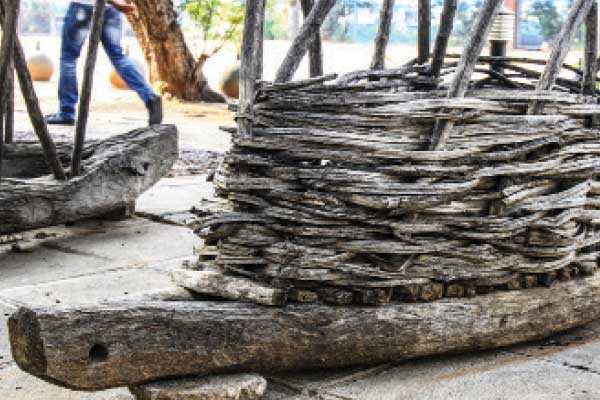Seeing Gabs through the eyes of a tourist
Hospitality and Tourism Association of Botswana (HATAB) in collaboration with the Botswana Society on Friday gave members of the media an opportunity to see the city of Gaborone through the eyes of a tourist.
The event, dubbed the Gaborone Cultural Heritage City Tour, afforded the ‘tourists’ with a chance to experience the beauty of the city and the history behind some of its heritage sights. The Botswana Society is a non-profit organisation that has been promoting Botswana’s heritage for more than forty years through its books, journals and public events. In their efforts and dedication to re-tell Botswana’s heritage, they conceptualised the Gaborone Cultural Heritage Tour as a way of promoting cultural heritage.
An interesting development about this tour is the fact that some of us all take for granted the history, and are rather not interested or are too lazy to take time and learn about places that are in our own backyards. Instead, we usually tend to spend money travelling to foreign countries and investing time in knowing about these places.
The packed itinerary started off at the National Museum where tour guide Benson Dingalo took the media through some of the old forms of transport that include the sleigh, ox wagon as well as the donkey carts and one of the first trains, Rhodesia train. However, the fact that the museum is closed deprived them the opportunity to know about some history of Botswana and her journey.
Prior to picking Gaborone as the capital city, there were other areas that include Shashe, Lobatse, Serowe, and Palapye that were on the table. But the final selection was Gaborone due to its proximity as well as its location on the Cape-Cairo route and the Gaborone Dam that had been established in 1963. In the beginning due to the then lifestyle of Batswana, it was anticipated that 20 000 residents would reside in the city. Next up on the tour was a short drive to the National Museum. The drive afforded us the chance to learn more about a monument for The Pioneers.
The Pioneers were Batswana who participated in the Second World War (1939-1945), and were on the side of British (our colonisers). The men who eventually departed for the war were picked by their chiefs. In total, ten thousand men left for the war, and two hundred and ten lost their lives and six hundred and thirty seven were injured.
Dingalo explained that because most of the men were not experienced in using weapons, most of the men took posts such as digging holes for the soldiers as well as cooking. “You can imagine that sending ten thousand men from a population of 300,000 at the time was a big number,” he said. Second up was driving to the University of Botswana (UB) and learning along the way that at the time of independence in 1966, only what is known today, as the Grand Stand existed at the National Stadium. Prior to the establishment of the University of Botswana, the governments of Botswana, Lesotho and Swaziland had BOLESWA that was based in Lesotho until around 1975.
Following this development, Botswana and Swaziland partnered. The UB became a stand along university in 1982. The tourists learnt about one of the important rooms in the compound of the UB that is the old library. Back then, students either had to stand or borrow the books and use them outside the small library. Other places that they visited included a drive to the Gaberones Camp, where two colonial masters of the time were housed.
The place that is today called the Village also has a gravesite for the victims of the Anglo Boer war. Unfortunately, the graves all look abandoned with tall grass covering them. The old Prison was next on the list. And most importantly, was learning about the BHC trial houses that are located at the Village. The houses made with Asbestos were later abandoned. For this reporter, this was one of the highlights from this tour. For years, we have passed by these houses and have always longed to know the story behind them. Eventually, I had thought expatriates who have gone back and left them in that state owned them.
Old Naledi was another highlight from the half-day itinerary. The history of the township can be traced to around 1970 when the city was established. There was no residential plan for the people who came to Gaborone seeking employment. It is on this backdrop that a squatter settlement was established at Old Naledi, and the government later declared the residents of this settlement legal. “Pieces of land were allocated on a first come first serve basis. And the land came with a drop toilet,” Dingalo said. Other places on the tour included the Three Chiefs Monument as well as Bonnington.






